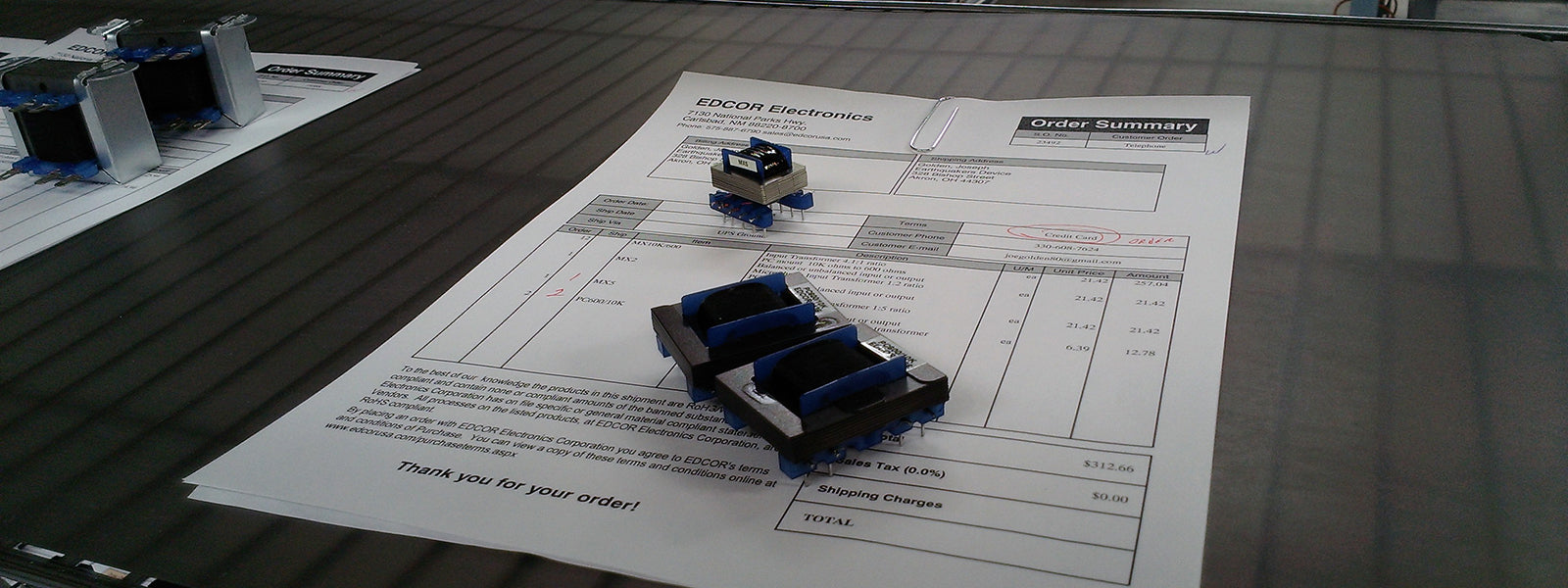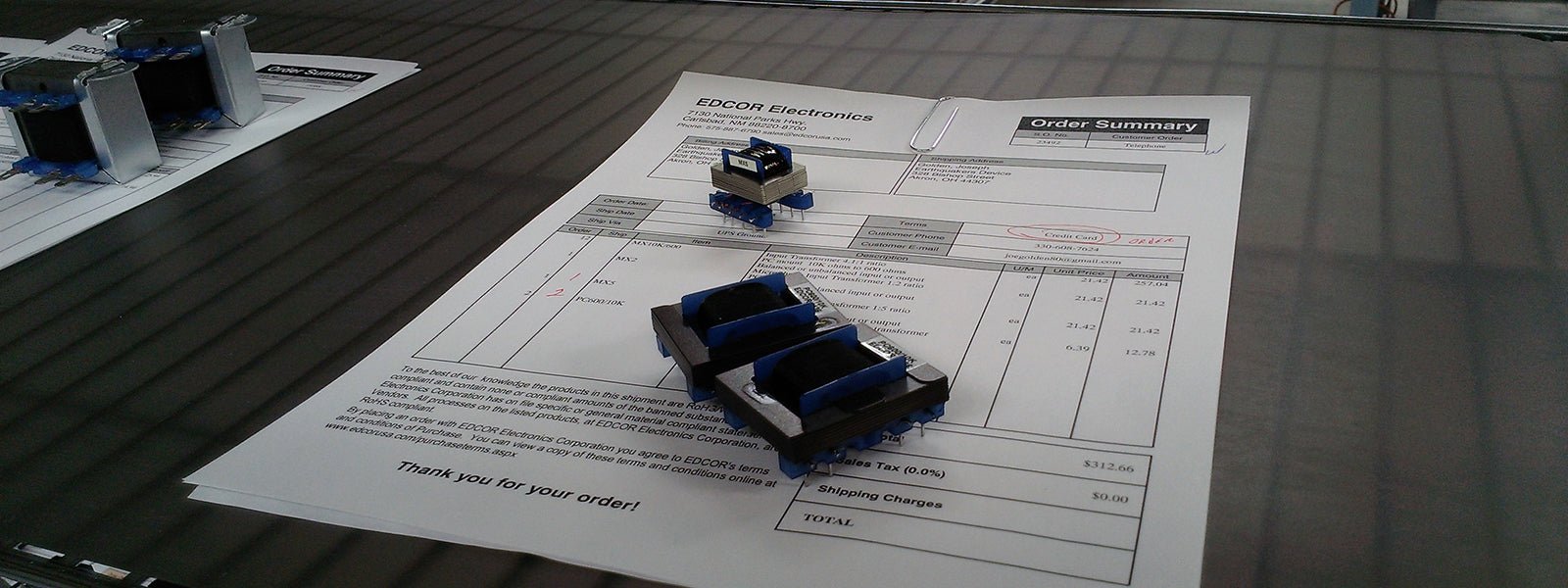Custom design a XPWR transformer with a number of outputs (secondaries) totaling 300VA. Let’s say one of the outputs is 6.3Vrms (all future comments will be rms Volts) at 5A. In addition, don’t let the temperature rise above 40 degrees Fahrenheit and keep the flux density well below saturation. Simple, right?
Well, a few years ago we ran into a design problem. A customer needed a power transformer that had to have an exact output voltage and the transformer was also going to be the heat source in a fairly constant enclosure, 2000 feet deep in the ocean. The customer needed it to run at 110 to 120 degrees centigrade (reasonably warm). The first unit didn’t work exactly as anticipated. The output voltage was not exact. Once they were able to provide an exact input voltage, we were able to provide the exact output voltage and heat source. The transformers are still running deep in the ocean without a problem.
Now back to the XPWR. One of the problems is the normal voltage variation from 110V to 125V across the USA, let alone across other countries. First, let’s say this design is for the USA, so we will pick a logical input voltage of 120V. Next, we look at the chosen output voltage. If the unit is theoretically fully loaded, the Great Computer determines we need a 1.05 loss factor, or a 6.6V unloaded output, to get 6.3V loaded. This is why my father had so many slide rules laying around. The primary turns are determined and a turn ratio is derived to develop the 6.6V output with 7 turns. A center-tap at 7 turns is not preferable. To create one would add expense and confusion in the manufacturing and to the users. So, let’s use 8 turns to keep it simple. The result: a unit which puts out 7.2 volts with a 120V input.
However, with all windings fully loaded, it should measure 6.8 Volts. If you wall voltage source is over 120V, say 125V, you would have even higher voltage. Well, some say tubes run too bright and tube life is shorter at this level, hence the dilemma.
Solution: turn the input voltage to the house down a little. Well that is not really a solution, it would be nice. But you can find places, like Mouser.com, that have a wide selection power wound resistors of low values that would allow you to drop 0.5V or whatever voltage you need. 0.5V/5A = 0.1 Ohms. Resistor wattage (5 x 5 x 0.1) = 2.5W.
Now what happens if you design a power transformer with a 600V output and a 120V input. But when you hook the unit up to notice that you are not getting the 600V you need. Instead you are getting more like 550V. Did the Great Computer fail us? No, this is a source failure. You measurer the plug in the wall, and it is only putting out 110V. 120V to 600V is a 1:5 ratio. So, 110V with a 1:5 ratio is 550V. As I mentioned before the normal power variations from a wall outlet can be 110V to 125V. I have seen, at time at our factory even dow to 108V. This is why we use a veriac and voltage meters on our testing benches. That why we can adjusts up or down as needed. The higher the turns ratio, up or down, the more this will effect the output voltage.
So, what really is the solution? One, you can use a veriac to regulate the input voltage to the transformer. As your wall voltage can change as more people in your area use power, you might find yourself tuning it to the right voltage each hour. So, what to do? You might have to design your amplifier around the power line voltage. This meaning, were it is going to be use the most. Take measurements orver a period of time through the day. See, what the average volt output is. Then maybe get a transformer that is a bit higher voltage then you want and use power wound resistor to fine tune the voltage. Remenber, is has be this way sense the down of electricity. It is just with technology getting more advance we see it more. Especially with analog designs.




